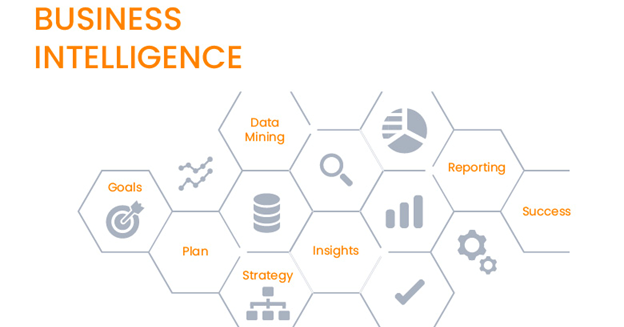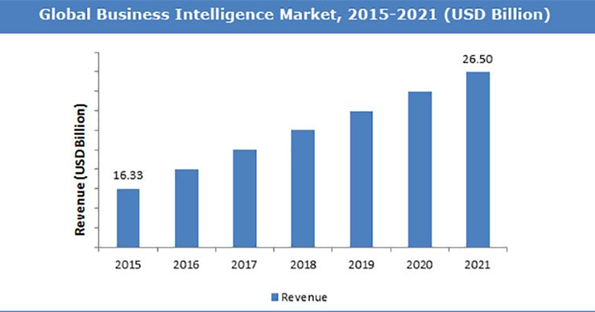A business intelligence (BI) solution can help you make more informed decisions for your business. From page traffic to a sales tracker, analytics can be gathered in different ways to make sure you get the salient information you can use to make effective and actionable reports.
BI solutions can come in different forms and not every BI solution will be right for every business. This is why it’s important to consider these various factors in deciding on the best business intelligence solution for you.
Below are eight strategies for selecting the right solution for your organisation. We’ll run through everything you need to consider:
- Consider what you already have - will it fit in?
- Consider what it needs to be used for
- Consider who will use it
- Consider whether it needs to be adaptable
- Consider how expensive it will be
- Consider the level of IT support required
- Consider whether or not a mobile version is required
- Evaluate
1. Consider what you already have - will it fit in?
Firstly, you need to reflect on what tech is already powering the business. This is important as not every BI solution will be compatible with every software.
Assessing your tech stack is a top priority. Consider what you use in every area of the business - CRM, accounting software, HRIS software, etc. These programmes will ultimately dictate what you choose. One of the most important criteria is that all the software fit together.
Furthermore, various important BI features, such as customer analytics, may be present in software that you already use daily, such as a CRM system. So there’s no need to pay for it in an expensive BI package when you already own it. This will make all the difference when it comes to your profits. It will also help to minimise non-essential software on your servers, freeing space and ensuring higher speeds.

2. Consider what it needs to be used for
How complex do the capabilities need to be? If your company is small and its operations are limited, it may be that you don’t require a great number of add-ons. On the other hand, a large company with several different products, departments, or offices will need a much more well-rounded programme.
BI solutions can include features such as what-if analyses, ranking reports, and even AI for sales. Given the great number of features available, it’s important that you be meticulous when it comes to deciding what you need for each department in the business.
3. Consider who will use it
There’s a world of difference between a professional data analyst and Joe Bloggs from the customer service department. If you require the software to be used by an extended user base, you’ll need a much more user-friendly interface.
Some BI companies are better at this than others. Whereas advanced solutions will involve coding, simple and easy to use software is much more basic, with fewer features. So, there’s certainly a trade-off there.
In a 2020 survey, 73.4% of companies saw BI adoption as a challenge. This reveals that it’s not easy to introduce the tool to newbies. Staff may be reluctant to take it on in their everyday operations, meaning that training them will be practically impossible if the software is too complex.
In addition, if the software is being used by a large cohort of employees, then a BI solution that allows many different users at once will be required. This will likely mean a larger package.
4. Consider whether it needs to be adaptable
Is this software you’re using for the here and now, or will it need to be around during scaling up? Furthermore, your company may continually change over the years, serving different markets and selling different products. Adaptability is a key factor where BI solutions differ.
Some companies and packages are confined to smaller companies and limited usage. Swapping over to an expanded option can mean a lot of work to convert the data, install the new software, and train up new employees. Or, worse yet, it could result in the loss of data, setting you back with your analytics and your BI journey.
When going through reviews and discerning between the good and the bad, take a moment to consider how the software will grow and move with you during business development.
An agile and evolving software will be better than a (perhaps more affordable) simple, stagnant solution.
5. Consider how expensive it will be
The BI solution market is booming, and the below graph is proof of that. This comes with a price tag. More features will mean higher costs. Think about this when deciding on the right solution for you.
This puts all of the other considerations into perspective. While the other points are important, the company’s bottom line overrides everything. It will be this that determines whether or not you invest in the latest software - so choosing something which suits your needs, rather than loads of features you don’t need, is vital.
Some businesses, especially small ones, may be able to access, for example, funding for start-ups that is dedicated to organisational tech, including BI solutions. This is something worth looking into if you feel that a BI solution would help your business but is out of reach.

6. Consider the level of IT support required
All these different BI solutions come with different levels of support. Customer support comes with all software, but some software will provide an improved customer experience. Depending on who will use the software and whether or not you have IT support already in your business, you will have to decide on how much support you need.
If something goes wrong, or you can’t figure out how it works, having someone attentive at the end of the phone will be a lifesaver. IT support takes away unwanted stress and can especially help employees across the business who may not be sure of what they’re doing. Downtime, when you can’t figure out what changes to make next, will result in stagnated growth and losses.
On the other hand, and if more feasible, you could consider hiring an in-house BI-software support consultant. They would be on hand to help with any issues that may arise from different parts of the business. Having someone in-house will be a better solution for larger businesses, where immediate support is required.
7. Consider whether or not a mobile version is required
Viewing your stats on the go can help with travelling businesses and allow you to be a lot more agile with business meetings.
In these times of an online call center being the standard, it’s becoming more important than ever to conduct business wherever you are. Being switched on all the time can help you stay ahead of the competition, after all.
However, a disadvantage of this is that it increases the risk of security breaches, as portable data can be more easily hacked, especially if this info is being accessed by multiple employees.
8. Evaluate
Once you have put your BI solution into practice and seen it through for a few months at least, it’s time to assess whether it’s truly right for you and your business needs.
You can evaluate the BI software by hiring an assessor to look into it for you or by employing someone already at the company to conduct a thorough analysis of whether the software is working for you.
This needs to be evaluated in a similar way to, for example, a sales funnel strategy.
This may seem like a waste of time, but much time, money, and energy are lost thanks to ineffective software that clogs up computer systems.

Worth it
All of the considerations above are important when it comes to deciding on a BI solution.
But, if you’re still thinking about whether or not it’s strictly necessary, just know that it usually does add value beyond its cost. As stated, there’s a clear benefit to introducing a business intelligence solution into your business.
Although it may cost money upfront, it saves you money in the medium and long term. This is because it helps you to keep track of what’s going on in the business and make changes accordingly.
In the medium term, it helps save on costs as you’ll be running more efficiently. In the long term, however, the company will continuously be improving. Remaining competitive is greatly important when it comes to a long-term plan. It will keep customers coming back and, therefore, ensure a constant life source for the business.
Author Bio:
Grace Lau is the Director of Growth Content at Dialpad, an AI-powered cloud communication platform for better and easier team collaboration. She has over 10 years of experience in content writing and strategy.
Currently, she is responsible for leading branded and editorial content strategies, partnering with SEO and Ops teams to build and nurture content. She has written for sites like UpCity and RecruitCRM. Here is her LinkedIn.
